Panasonic VW-VMS10 Handleiding
Bekijk gratis de handleiding van Panasonic VW-VMS10 (4 pagina’s), behorend tot de categorie Camcorder. Deze gids werd als nuttig beoordeeld door 15 mensen en kreeg gemiddeld 4.3 sterren uit 8 reviews. Heb je een vraag over Panasonic VW-VMS10 of wil je andere gebruikers van dit product iets vragen? Stel een vraag
Pagina 1/4

-If you see this symbol-
• This unit is designed for use with Panasonic video cameras.
For the latest information on compatible devices, see the operating
instructions, catalogue or website of the video camera.
∫Handling the unit
•Do not subject the unit to strong vibration or impact. Those
actions may result in malfunctions and failure.
•Sand and dirt may cause the unit to malfunction. When using
the unit in an environment such as a beach, take steps to
protect it from sand and dirt.
• When using the unit on rainy days or on a beach, take care to keep
the unit dry.
•This unit is neither dust-proof nor splash-proof. If by any
chance water droplets, etc. are splashed on the unit, wipe them
off with a dry cloth. If the unit fails to function correctly, consult
your dealer or Panasonic.
• Please also read the manual of your video camera.
[Inspection to be performed when you unpack the unit]
When removing the unit from its packing box, check that the main
unit and its supplied accessory are there and also check their
appearance and functions to verify that they have not sustained
any damage during distribution and transportation.
If you discover any trouble, contact your dealer before use.
Product numbers correct as of November 2012. These may be
subject to change.
1 Wind Jammer
2 Soft Bag
1 Microphone condenser
2 Cable Holder
3 Lock ring
4 Shoe
5 Mini plug (‰ 3.5 mm/3 pole/L type) and Cable
6 Plug section
• Check that the video camera is turned off.
(Mounting the unit onto, or disengaging it from, the video camera
while the power is on may cause trouble and is not recommended.)
∫Mounting the unit
• If a shoe adapter is supplied with the video camera, mount it to the
video camera in advance. For details, read the operating
instructions of your video camera.
1Loosen the lock ring a.
• Do not apply excessive force on the lock ring.
2Slide the microphone fully into the accessory shoe
of the video camera.
3Rotate the lock ring in the direction of the arrow
until it stops.
• Make sure that the microphone is securely attached.
4Securely connect the plug to the microphone
terminal of the video camera.
• You can fasten the excess cable by tucking it into the cable
holder.
∫Removing the unit
• Disconnect the plug, and then remove the unit in reverse order of
mounting.
Note
• Hold the lock ring when mounting or removing the microphone. (See
illustration )
This unit can be used by turning the power to the video camera
on with the unit installed on the video camera.
∫Attaching the wind jammer
(See illustration)
• Insert the microphone condenser through the insertion opening in
the wind jammer and install so that the rear part of the microphone is
covered.
Installing the wind jammer can effectively reduce wind noise.
Note
• Attach and remove the wind jammer slowly and carefully.
• Touching the fibers of the wind jammer may cause any contact to be
recorded as noise.
∫Frequency Response
See illustration
∫Directionality Pattern
See illustration
∫About the unit
Do not use the unit near radio transmitters or high-voltage
lines.
• If you record near radio transmitters or high-voltage lines, the
recorded pictures and sound may be adversely affected.
Keep the unit away from insecticide sprays and other
volatile substances.
• If the unit is exposed to these sprays or substances, its external
case may deteriorate and/or its paint may come off.
• Do not leave the unit in contact with any items made of rubber or
PVC for prolonged periods of time.
Do not carry the unit with your hands while it is still attached
to a video camera.
• Under no circumstances should the unit be stored in any of the
following locations since doing so may cause trouble in operation or
malfunctioning:
• In direct sunlight or on a beach in summer
• In locations with high temperatures and humidity levels or where
changes in temperature and humidity are acute
• In locations with high concentrations of sand, dust or dirt
• Where there is fire
• Near heaters, air conditioners or humidifiers
• Where water may make the unit wet
• Where there is vibration
• Inside a vehicle
• Do not drop the unit, knock it into other objects or subject it to any
other kind of strong impact or shock.
• A dirty plug may result in faulty contact. Be sure to wipe the plug with
a dry soft cloth before connecting the microphone.
• Do not connect or disconnect the plug with the video camera turned
on.
• Before use, check that the microphone is recording normally.
• Do not disassemble or modify this unit.
∫Cleaning
When cleaning, wipe the unit with a dry soft cloth.
• When the unit is soiled badly, it can be cleaned by wiping the dirt off
with a wrung wet cloth, and then with a dry cloth.
• Do not use solvents such as benzine, thinner, alcohol, kitchen
detergents, etc., to clean the unit, since they may deteriorate the
external case or the coating may come off.
• When using a chemical cloth, be sure to follow the accompanying
instructions.
• Do not pull on the fibers of the wind jammer. This may cause the
fibers to fall out.
• Do not wash the wind jammer, or wet it.
• If the wind shield gets wet, remove it from the unit and air dry in the
shade.
• If the soft bag gets wet, wipe off the water with a dry towel, etc., from
the wet area, reshape the soft bag to its original shape, and air dry
thoroughly in the shade.
∫When the unit is not going to be used for a prolonged
period
• If you plan to keep the unit in a closet or cupboard, storing it with a
desiccant (silica gel) is recommended.
-Si vous voyez ce symbole-
• Ce microphone est fabriqué exclusivement pour les caméras vidéo
Panasonic.
Pour les plus récentes informations concernant les dispositifs
compatibles, consultez le manuel d’utilisation, le catalogue ou le site
Web de la caméra vidéo.
∫À propos de la manipulation du microphone
•Ne soumettez pas le microphone à une forte vibration ni à des
chocs violents. Cela pourrait provoquer un mauvais
fonctionnement et endommager le microphone.
•Le sable et la saleté peuvent causer le mauvais fonctionnement
du microphone. Si vous utilisez le microphone à la plage,
prenez des mesures pour le protéger du sable et de la saleté.
• En utilisant ce microphone les jours de pluie ou à la plage, prenez
soin de le garder au sec.
•Ce microphone n’est à l’épreuve ni de la poussière ni des
éclaboussures. En cas d’éclaboussures d’eau, etc., essuyez-le
avec un chiffon sec. Si le microphone ne fonctionne pas
correctement, veuillez communiquer avec votre revendeur ou
Panasonic.
• Veuillez lire également le manuel d’utilisation de votre caméra vidéo.
[La vérification doit être effectuée lorsque vous sortez le
microphone de l’emballage]
En retirant le microphone de son emballage, vérifiez la présence
de l’appareil principal et de ses accessoires et vérifiez également
l’apparence externe ainsi que leurs fonctions afin de vous
assurer qu’ils n’ont subi aucun dommage lors du transport ou de
la livraison.
Si vous découvrez un problème, contactez le revendeur avant
utilisation.
Les numéros de modèle sont à jour en date de novembre 2012.
Ils sont sujets à changements.
1 Bonnette anti-vent
2 Étui souple
1 Condensateur
2 Serre-câble
3 Anneau de verrouillage
4 Griffe porte-accessoires
5 Mini-fiche (‰ 3,5 mm/3 contacts/type L) et câble
6 Section de la fiche
• Assurez-vous que la caméra vidéo est hors marche. (Installer le
microphone sur, ou le retirer de, la caméra vidéo tandis que celle-ci
est en marche peut provoquer des problèmes et n’est pas
recommandé.)
∫Installation du microphone
• Si un support d’accessoires est fourni avec la caméra vidéo,
installez-le sur la caméra vidéo. Pour plus de détails, consultez le
manuel d’utilisation de votre caméra vidéo.
1Desserrez l’anneau de verrouillage a.
• N’employez pas plus de force que nécessaire sur l’anneau de
verrouillage.
2Faites glisser le microphone à fond sur la griffe
porte-accessoires de la caméra vidéo.
3Tournez l’anneau de verrouillage dans la direction
de la flèche jusqu’à ce qu’il s’arrête de tourner.
• Assurez-vous que le microphone est bien fixé.
4Raccordez fermement la fiche à la prise de
microphone de la caméra vidéo.
• Vous pouvez fixer le câble en l’insérant dans le serre-câble.
∫Retrait du microphone
• Débranchez la fiche, puis retirez le microphone en inversant la
procédure d’installation du microphone.
Nota
• Tenez le microphone par l’anneau de verrouillage lors de la mise en
place ou du retrait du microphone. (Consultez l’illustration )
Ce microphone peut être utilisé lors de la mise en marche de la
caméra vidéo lorsque celui-ci est monté sur la caméra vidéo.
∫Fixation de la bonnette anti-vent
(Consultez l’illustration)
• Insérez le condensateur dans la fente sur la bonnette anti-vent, puis
installez-le en vous assurant que la partie arrière du microphone est
couverte.
Le fait de fixer la bonnette anti-vent peut réduire efficacement le
bruit.
Nota
• Fixez et retirez la bonnette anti-vent lentement et soigneusement.
• Le fait de toucher les fibres de la bonnette anti-vent pourrait
occasionner l’enregistrement de tout contact en tant que bruit.
∫Réponse en fréquence
Consultez l’illustration
∫Directivité de l’antenne
Consultez l’illustration
∫À propos du microphone
N’utilisez pas le microphone près d’un émetteur radio ou de
lignes à haute-tension.
• L’utilisation du microphone à proximité d’un émetteur radio ou de
lignes à haute tension pourrait nuire à l’image ou au son.
Gardez le microphone loin des vaporisateurs d’insecticide
ou d’autres substances volatiles.
•
Si le microphone est exposé à ces vaporisateurs ou substances, son
boîtier externe peut s’abîmer et/ou son revêtement peut s’écailler.
• Ne laissez pas le microphone en contact avec tout objet fabriqué en
caoutchouc ou en PVC pendant une période prolongée.
Tenez la caméra vidéo lors du transport et non le
microphone.
• En aucunes circonstances vous ne devez ranger le microphone
dans les endroits indiqués ci-dessous car cela pourrait causer des
problèmes d’utilisation ou de mauvais fonctionnement :
• À la lumière directe du soleil ou sur la plage en été
• Dans des endroits ayant des niveaux de température et
d’humidité élevés ou dans des endroits où les changements de
température et d’humidité sont prononcés
• Dans des endroits ayant une forte concentration de sable, de
poussière ou de saleté
• Où il y a du feu
• Près de radiateurs, climatiseurs, humidificateurs
• Où l’eau pourrait mouiller le microphone
• Où il y a des vibrations
• À l’intérieur d’un véhicule
• Ne faites pas tomber le microphone, ne le cognez pas à d’autres
objets et ne le soumettez à aucun autre type de choc.
• Une fiche sale peut provoquer un faux contact. Essuyez la fiche à
l’aide d’un chiffon doux et sec avant d’utiliser le microphone.
• Évitez de brancher ou de débrancher le microphone pendant que la
caméra vidéo est en marche.
• Avant d’utiliser le microphone, il est recommandé de vérifier s’il
fonctionne correctement.
• Ne jamais désassembler ou modifier ce microphone.
∫Nettoyage
Lors du nettoyage, essuyez le microphone avec un chiffon
doux et sec.
•
Si le microphone est très sale, il peut être nettoyé en retirant la saleté
avec un chiffon mouillé et essoré, puis essuyé avec un chiffon sec.
• N’utilisez pas de solvants tels que du benzène, diluant, alcool,
détergent de cuisine, etc., pour nettoyer le microphone, cela
abîmerait le boîtier externe ou le revêtement pourrait s’écailler.
• Lors de l’utilisation d’une lingette chimique, lisez attentivement les
instructions jointes.
• Ne tirez pas sur les fibres de la bonnette anti-vent. Cela pourrait
déchirer les fibres.
• Évitez de laver la bonnette anti-vent ou de la mouiller.
• Si la bonnette anti-vent est mouillée, retirez-la du microphone et
faites-la sécher à l’ombre.
• Si l’étui souple est mouillé, essuyez l’eau avec une serviette sèche,
etc., remettez l’étui à sa forme originale, puis laissez-le sécher à
l’ombre.
∫Si le microphone n’est pas utilisé durant une période
prolongée
•
Si vous prévoyez de ranger ce microphone dans un placard ou une armoire,
il est recommandé de le ranger avec un déshydratant (gel de silice).
-Si ve este símbolo-
• Esta unidad está diseñada para usar con videocámaras Panasonic.
Para obtener la última información sobre los dispositivos
compatibles, consulte las Instrucciones de funcionamiento, el
catálogo o el sitio web de la videocámara.
∫Manipulación de la unidad
•No someta la unidad a vibración fuerte o impacto. Estas
acciones pueden causar fallas o averías.
•La arena y la suciedad pueden causar una falla de la unidad.
Cuando usa la unidad en un ambiente como una playa, tome
las medidas necesarias para protegerla de la arena y la
suciedad.
• Cuando usa la unidad en días de lluvia o en una playa, tenga
cuidado para mantener la unidad seca.
•Esta unidad no es resistente al polvo ni resistente a
salpicaduras. Si por algún motivo, gotas de agua, etc. salpican
la unidad, límpielas con un paño seco. Si la unidad no funciona
correctamente, consulte a su distribuidor o a Panasonic.
• También lea el manual de su videocámara.
[Se debe realizar una inspección al desembalar la unidad]
Al sacar la unidad de su caja de embalaje, revise que la unidad
principal y su accesorio suministrado estén presentes y también
revise la apariencia y las funciones para verificar que no se
hayan dañado durante la distribución y el transporte.
Si descubre algún problema, comuníquese con su distribuidor
antes de usar la unidad.
Referencias vigentes desde noviembre de 2012. Pueden sufrir
modificaciones.
1 Bloqueador de viento
2 Bolsa blanda
1 Condensador del micrófono
2 Soporte del cable
3 Anillo de bloqueo
4 Zapata
5 Mini enchufe (‰ 3,5 mm/3 polo/tipo L) y cable
6 Sección del enchufe
• Revise que la videocámara esté encendida. (Colocar la unidad
sobre la cámara o desmontarla de ella mientras está encendida,
puede causar un problema y no se recomienda hacerlo.)
∫Montaje de la unidad
• Si la zapata adaptadora de accesorios se suministra con la
videocámara, colóquela en la videocámara de antemano. Para
obtener más detalles, consulte las Instrucciones de funcionamiento
de su videocámara.
1Afloje el anillo de bloqueo a.
• No aplique fuerza excesiva en el anillo de bloqueo.
2Deslice por completo el micrófono en la zapata
adicional de la videocámara.
3Gire el anillo de bloqueo en la dirección de la
flecha hasta que se detenga.
• Asegúrese de que el micrófono esté colocado de forma
segura.
4Conecte de forma segura el enchufe al terminal del
micrófono de la videocámara.
• Puede ajustar el exceso de cable al enrollarlo en el soporte del
cable.
∫Extracción de la unidad
• Desconecte el enchufe y luego retire la unidad en el orden inverso al
del montaje.
Nota
• Sostenga el anillo de bloqueo al colocar o sacar el micrófono. (Vea
la ilustración )
Esta unidad se puede usar al encender la videocámara con la
unidad instalada en la videocámara.
∫Colocación del bloqueador de viento (Vea la ilustración)
• Coloque el condensador del micrófono en la apertura de inserción
del bloqueador de viento e instale de manera que la parte posterior
del micrófono esté cubierta.
Instalar el bloqueador de viento puede reducir eficazmente el
ruido del viento.
Nota
• Coloque y retire lentamente y con cuidado el bloqueador de viento.
• Tocar las fibras del bloqueador de viento puede causar que se
grabe como ruido cualquier contacto.
∫Respuesta de frecuencia
Vea la ilustración
∫Patrón de direccionamiento
Vea la ilustración
∫Acerca de la unidad
No utilice la unidad cerca de un transmisor de radio o línea
de alta tensión.
• Si graba cerca de un transmisor de radio o líneas de alta tensión,
las imágenes y el sonido grabados pueden verse afectados.
Mantenga la unidad lejos de rociadores de insecticida y
otras sustancias volátiles.
• Si la unidad se expone a esos rociadores o sustancias, se puede
deteriorar su carcasa externa o se puede salir la pintura.
• No deje la unidad en contacto con objetos de goma o PVC durante
períodos de tiempo prolongados.
No transporte la unidad con sus manos mientras todavía
está colocada en la videocámara.
• Bajo ninguna circunstancia la unidad se debe almacenar en
cualquiera de las siguientes ubicaciones p1-ya que si lo hace puede
haber problemas en el funcionamiento o fallas:
• En la luz solar directa o en una playa en verano
• En ubicaciones con altas temperaturas y altos niveles de
humedad o donde los cambios de temperatura y humedad son
agudos
• En ubicaciones donde hay las altas concentraciones de arena,
polvo o suciedad
• Donde hay fuego
• Cerca de calefactores, aires acondicionados o humidificadores
• Donde el agua puede mojar la unidad
• Donde hay vibración
• Dentro de un vehículo
• No deje caer la unidad, no la golpee con otros objetos ni la someta a
otro tipo de impacto o golpe fuerte.
• Un enchufe sucio puede causar un contacto defectuoso. Asegúrese
de limpiar el enchufe con un paño seco antes de conectar el
micrófono.
• No conecte ni desconecte el enchufe con la videocámara
encendida.
• Antes de usar, revise que el micrófono esté grabando normalmente.
• No desarme ni modifique esta unidad.
∫Limpieza
Al limpiar, use un paño seco y suave.
• Cuando la unidad está demasiado sucia, puede limpiarse al quitar la
suciedad con un trapo mojado y escurrido, y luego con un trapo
seco.
• No utilice disolventes como gasolina, diluyente, alcohol, detergentes
para cocina, etc., para limpiar la unidad p1-ya que de hacerlo podría
deteriorarla y podría pelarse su revestimiento.
• Al usar un trapo químico, tenga cuidado de seguir las respectivas
instrucciones adjuntas.
• No tire las fibras del bloqueador de viento. Esto puede causar que
las fibras se caigan.
• No lave el bloqueador de viento con agua, ni lo humedezca.
• Si la protección contra el viento se moja, sáquela de la unidad y
séquela en un lugar al aire libre y a la sombra.
• Si la bolsa protectora se humedece, limpie el agua con una toalla
seca, etc., vuelva a darle forma a la bolsa protectora y seque
minuciosamente a la sombra.
∫Cuando esta unidad no se va a usar durante un período de
tiempo prolongado
• Si planea mantener la unidad en un armario o ropero, se
recomienda guardarla con desecante (silicagel).
Information for Your Safety
WARNING:
To reduce the risk of fire, electric shock or product
damage,
•Do not expose this unit to rain, moisture, dripping or
splashing.
•Use only the recommended accessories.
•Do not remove covers.
•Do not repair this unit by yourself. Refer servicing to
qualified service personnel.
Disposal of Old Equipment
Only for European Union and countries with recycling systems
This symbol on the products, packaging, and/or
accompanying documents means that used electrical
and electronic products must not be mixed with general
household waste.
For proper treatment, recovery and recycling of old
products, please take them to applicable collection
points in accordance with your national legislation.
By disposing of them correctly, you will help to save
valuable resources and prevent any potential negative
effects on human health and the environment.
For more information about collection and recycling,
please contact your local authority.
Penalties may be applicable for incorrect disposal of
this waste, in accordance with national legislation.
Manufactured by:
Panasonic Entertainment & Communication Co., Ltd.
1-10-12, Yagumo-higashi-machi, Moriguchi City, Osaka, Japan
Importer for UK:
Panasonic UK, a branch of Panasonic Marketing Europe GmbH
Maxis 2, Western Road, Bracknell, Berkshire, RG12 1RT
Importer for EU:
Panasonic Marketing Europe GmbH
Authorized Representative in EU:
Panasonic Testing Centre
Winsbergring 15, 22525 Hamburg, Germany
Precautions
ASupplied accessories
BNames of the components
CMounting on and removing from the video camera
ENGLISH
DUsing the microphone
EFrequency responses and directionality pattern
diagrams
1 Response 2 Frequency
1 Front 2 Rear
3 Stereo (Left) 4 Stereo (Right)
Cautions for use
Specifications
Model Electret condensor type microphone
Directionality
characteristics
uni-directional (STEREO)
Frequency
response
80 Hz to 20,000 Hz
Sensitivity s u37 dBV (0 dB 1 V/Pa, 1 kHz)
S/N 66 dB or more
Output cable ‰3.5 mm gold-plated L type stereo mini plug
(length Approx. 260 mm/0.85 feet)
Dimensions Approx. 30 mm (W)k67 mm (H)k89 mm (D)
[1.18q (W)k2.64 3.5q (H)k q (D)]
(excluding the cable portion)
Mass (weight) Approx. 64 g/2.3 oz (main unit)
Operating
temperature
0 °C to 40 °C (32 °F to 104 °F)
Operating
humidity
35%RH to 80%RH
Précautions à prendre
AVERTISSEMENT :
Pour réduire les risques d’incendie, de choc électrique ou
de dommages à l’appareil :
•N’exposez pas cet appareil à la pluie, à l’humidité, à
l’égouttement ou aux éclaboussements;
•Utilisez exclusivement les accessoires recommandés;
•Ne retirez pas les couvercles;
•Ne réparez pas l’appareil vous-même. Confiez toute
réparation à un technicien de service qualifié.
Élimination des équipements usagés
Applicable uniquement dans les pays membres de l’Union
européenne et les pays disposant de systèmes de recyclage.
Apposé sur le produit lui-même, sur son emballage, ou
figurant dans la documentation qui l’accompagne, ce
pictogramme indique que les appareils électriques et
électroniques usagés doivent être séparés des ordures
ménagères.
Afin de permettre le traitement, la valorisation et le
recyclage adéquats des appareils usagés, veuillez les
porter à l’un des points de collecte prévus,
conformément à la législation nationale en vigueur.
En les éliminant conformément à la réglementation en
vigueur, vous contribuez à éviter le gaspillage de
ressources précieuses ainsi qu’à protéger la santé
humaine et l’environnement.
Pour de plus amples renseignements sur la collecte et
le recyclage, veuillez vous renseigner auprès des
collectivités locales.
Le non-respect de la réglementation relative à
l’élimination des déchets est passible d’une peine
d’amende.
Fabriqué par:
Panasonic Entertainment & Communication Co., Ltd.
1-10-12, Yagumo-higashi-machi, ville de Moriguchi, Osaka, Japon
Importateur :
Panasonic Marketing Europe GmbH
Représentant autorisé dans l’UE :
Panasonic Testing Centre
Winsbergring 15, 22525 Hambourg, Allemagne
Précautions
AAccessoires fournis
BNoms des composants
CInstallation et retrait du microphone de la caméra
vidéo
FRANÇAIS
DUtilisation du microphone
ESchémas de réponse en fréquence et de directivité de
l’antenne
1 2 Réponse Fréquence
1 2 Avant Arrière
3 Stéréo (Gauche) 4 Stéréo (Droite)
Précautions d’utilisation
Spécifications
Modèle Microphone à condensateur électret
Caractéristiques
de la directivité
Unidirectionnel (STÉRÉO)
Réponse en
fréquence
80 Hz à 20 000 Hz
Sensibilité s u37 dBV (0 dB 1 V/Pa, 1 kHz)
Rapport S/B 66 dB ou plus
Câble de sortie
Mini-fiche stéréo (
‰
3,5 mm, plaqué or, type L)
(longueur d’environ 260 mm/0,85 pied)
Dimensions Environ 30 mm (L)k k67 mm (H) 89 mm (P)
[1,18 po (L)k2,64 po (H)k3,5 po (P)]
(sans la partie du câble)
Poids Environ 64 g/2,3 oz (appareil principal)
Température de
fonctionnement
0 °C à à 40 °C (32 °F 104 °F)
Humidité relative
de fonctionnement
35% à 80%
Información para su seguridad
ADVERTENCIA:
Para reducir el riesgo de incendios, de descargas
eléctricas o de daños en el producto,
•No exponga esta unidad a la lluvia, humedad, goteo o
salpicaduras.
•Utilice solamente los accesorios recomendados.
•No retire las cubiertas.
•No repare esta unidad usted mismo. Llévesela al personal de
reparación calificado.
Eliminación de Aparatos Viejos
Solamente para la Unión Europea y países con sistemas de
reciclado.
Este símbolo en los productos, su embalaje o en los
documentos que los acompañen significa que los
productos eléctricos y electrónicos usadas no deben
mezclarse con los residuos domésticos.
Para el adecuado tratamiento, recuperación y reciclaje
de los productos viejos llévelos a los puntos de
recogida de acuerdo con su legislación nacional.
Si los elimina correctamente ayudará a preservar
valiosos recursos y evitará potenciales efectos
negativos sobre la salud de las personas y sobre el
medio ambiente.
Para más información sobre la recogida u reciclaje, por
favor contacte con su ayuntamiento.
Puede haber sanciones por una incorrecta eliminación
de este residuo, de acuerdo con la legislación
nacional.
Fabricado por:
Panasonic Entertainment & Communication Co., Ltd.
1-10-12, Yagumo-higashi-machi, Ciudad de Moriguchi, Osaka, Japón
Importador:
Panasonic Marketing Europe GmbH
Representante Autorizado para la UE:
Panasonic Testing Centre
Winsbergring 15, 22525 Hamburgo, Alemania
Precauciones
AAccesorios suministrados
BNombres de componentes
CColocación y extracción de la videocámara.
ESPAÑOL
DUso del micrófono
ERespuestas de frecuencia y diagramas del patrón de
direccionamiento
1 Respuesta 2 Frecuencia
1 Frontal 2 Trasero
3 Estéreo (izquierda) 4 Estéreo (derecha)
Precauciones para el uso
Especificaciones
Modelo Micrófono tipo condensador electret
Características del
direccionamiento
Unidireccional (STEREO)
Respuesta de la
frecuencia
80 Hz a 20.000 Hz
Sensibilidad s u37 dBV (0 dB 1 V/Pa, 1 kHz)
S/N 66 dB o más
Cable de salida ‰
Mini enchufe estéreo tipo L dorado de 3,5 mm
(longitud aproximada 260 mm/0,85 pies)
Dimensiones
Aproximadamente 30 mm (Ancho)
k
67 mm (Alto)
k
89 mm (Profundidad)
[1,18
q
(Ancho)
k
2,64
q
(Alto)
k
3,5
q
(Profundidad)]
(sin incluir la parte del cable)
Masa
Aproximadamente 64
g
/2,3 oz (unidad principal)
Temperatura de
funcionamiento
0 °C a 40 °C (32 °F a 104 °F)
Humedad de
funcionamiento
de 35%RH a 80%RH
Operating Instructions
Manuel d’utilisation
Instrucciones de funcionamiento
Istruzioni d’uso
Bedienungsanleitung
Stereo Microphone
Microphone stéréo
Micrófonos estéreo
Microfono stereo
Stereo Mikrofon
Model No./No de modèle
VW-VMS10
PP/
VW-VMS10
E
A
B
C
D
E
Panasonic Entertainment
& Communication Co., Ltd.
Web Site: http://www.panasonic.com
VFC4922
1 2
VFC4923
4
5
3
6
2
1
1 2
3 4
(dB)
(Hz)
1000500 200010050 200 100005000 20000
0
10
20
30
40
10
0
90
180
0
30
60
90
120
150
180
150
120
90
60
30
30
10
0dB
20
VQT4U66-1
F1112MY1022


-Se vedete questo simbolo-
• Questa unità è progettata per essere utilizzata con una videocamera
Panasonic.
Per le informazioni più recenti sui dispositivi compatibili, consultare
le istruzioni per l’uso, il catalogo o il sito web della videocamera.
∫Utilizzo dell’unità
•Non esporre l’unità a forti vibrazioni o urti. In caso contrario è
possibile che si verifichino guasti e malfunzionamenti.
•Sabbia e polvere possono provocare il malfunzionamento
dell’unità. Quando si utilizza l’unità in ambienti quali una
spiaggia, prendere le precauzioni necessarie a proteggerla
dalla sabbia e dalla polvere.
• Quando si utilizza l’unità in giornate piovose o su una spiaggia, fare
attenzione che non si bagni.
•Questa unità non è impermeabile né alla polvere né agli schizzi.
Qualora l’unità venisse raggiunta da goccioline d’acqua,
rimuovere queste ultime con un panno asciutto. Qualora l’unità
non funzionasse correttamente, consultare il proprio
rivenditore o Panasonic.
• Fare inoltre riferimento al manuale della videocamera.
[Controllo da effettuare al momento del disimballo dell’unità]
Quando si rimuove l’unità dalla scatola di imballaggio, controllare
che siano presenti l’unità principale e i relativi accessori in
dotazione; controllarne inoltre l’aspetto e la funzionalità, per
verificare che non abbiano subito danni durante la distribuzione e
il trasporto.
Qualora si riscontrino problemi, contattare il rivenditore prima di
utilizzare l’unità.
I numeri del prodotto sono aggiornati a novembre 2012. Possono
essere modificati senza preavviso.
1 Filtro antivento
2 Borsa morbida
1 Condensatore microfono
2 Supporto cavo
3 Ghiera di bloccaggio
4 Attacco
5 Connettore mini (‰ 3,5 mm/3 poli/ tipo L) e cavo
6 Connettore spinotto
• Controllare che la videocamera sia spenta. (Se si installa l’unità
sulla fotocamera o la si rimuove mentre la fotocamera è accesa è
possibile che si verifichino problemi, per cui si sconsiglia di farlo.)
∫Installazione dell’unità
• Se viene fornito in dotazione con la videocamera un adattatore per
l’attacco, montarlo già da prima sulla videocamera. Per maggiori
dettagli, consultare le istruzioni per l’uso della videocamera.
1Allentare la ghiera di bloccaggio a.
• Non esercitare una forza eccessiva sulla ghiera di bloccaggio.
2Far scorrere il microfono fino in fondo
nell’adattatore per l’attacco della videocamera.
3Ruotare la ghiera di bloccaggio nella direzione
indicata dalla freccia finché non si arresta.
• Assicurarsi che il microfono sia installato saldamente.
4Collegare saldamente il connettore al terminale
microfono della videocamera.
• È possibile fissare il cavo in eccesso ripiegandolo all’interno
del relativo supporto.
∫Rimozione dell’unità
• Scollegare il connettore, quindi rimuovere l’unità eseguendo le
operazioni di installazione in ordine inverso.
Nota
• Tenere ferma la ghiera di bloccaggio quando si installa o si rimuove
il microfono. (Vedere la figura )
Per utilizzare questa unità accendere la videocamera mentre
l’unità è installata su di essa.
∫Installazione del filtro antivento (vedere la figura)
• Inserire il condensatore del microfono nel filtro antivento attraverso
l’apposita apertura e installarlo in modo che la parte posteriore del
microfono risulti coperta.
Il filtro antivento è in grado di ridurre efficacemente il rumore del
vento.
Nota
• Quando si installa e si rimuove il filtro antivento, eseguire
l’operazione lentamente e con attenzione.
• Se si sfiorano le fibre del filtro antivento, potrebbe venire registrato
un rumore.
∫Risposta in frequenza
Vedere la figura
∫Schema di direzionalità
Vedere la figura
∫Informazioni sull’unità
Non utilizzare l’unità vicino a trasmettitori radio o linee ad
alta tensione.
• Se si effettua una registrazione vicino a trasmittenti radio o a linee
ad alta tensione, le immagini registrate e il suono possono esserne
disturbati.
Tenere l’unità al riparo da spruzzi di insetticidi e di altre
sostanze volatili.
• Qualora l’unità fosse esposta a tali spruzzi o sostanze, la superficie
esterna potrebbe deteriorarsi o la vernice potrebbe scrostarsi.
• Non lasciare l’unità a contatto prolungato con oggetti in gomma o
PVC.
Non trasportare l’unità tenendola in mano mentre è ancora
installata su una videocamera.
• Non lasciare mai l’unità nelle seguenti condizioni, per evitare danni o
malfunzionamenti:
• Esposta alla luce solare diretta o su una spiaggia in estate
• In luoghi caratterizzati da elevati livelli o forti sbalzi di
temperatura e umidità.
• In luoghi caratterizzati da elevate concentrazioni di sabbia,
polvere o sporcizia
• In prossimità di fuochi
• Vicino a caloriferi, condizionatori d’aria o umidificatori
• Esposta ad acqua che possa bagnare l’unità
• Esposta a vibrazioni
• All’interno di un’auto
• Non lasciar cadere l’unità, non farla urtare contro altri oggetti e non
esporla ad alcun tipo di impatto violento.
• Se il connettore è sporco, è possibile che non faccia contatto. Pulire
il connettore con un panno asciutto e morbido prima di collegare il
microfono.
• Non inserire o rimuovere il connettore quando la videocamera è
accesa.
• Prima dell’uso, controllare che il microfono funzioni regolarmente.
• Non smontare o modificare questa unità.
∫Pulizia
Per pulire l’unità, strofinarla con un panno asciutto e
morbido.
• Quando l’unità è estremamente sporca, è possibile pulirla
rimuovendo la sporcizia con un panno umido strizzato, e quindi
passando un panno asciutto.
• Non utilizzare solventi come benzina, diluenti, alcol, detergenti da
cucina, ecc. per pulire l’unità, per evitare di deteriorare la superficie
o di rimuovere la finitura esterna.
• Quando si utilizza un panno chimico, seguire attentamente le
relative istruzioni.
• Non tirare le fibre del filtro antivento, per evitare che si stacchino.
• Non lavare il filtro antivento con acqua e non bagnarlo.
• Qualora la protezione antivento si bagnasse, rimuoverla dall’unità e
farla asciugare all’aria al riparo dalla luce solare diretta.
• Qualora la borsa morbida si bagnasse, rimuovere l’acqua presente
con un asciugamano asciutto ecc., riportare la borsa morbida alle
condizioni originali, quindi farla asciugare all’aria, al riparo dalla luce
solare diretta.
∫Quando si prevede di non utilizzare l’unità per un periodo
prolungato
• Se si prevede di tenere l’unità in un cassetto o in un armadietto, si
consiglia di porvi accanto un disseccante (silica gel).
-Bedeutung des nachstehend abgebildeten Symbols-
• Dieses Gerät ist für die Verwendung mit Panasonic-Videokameras
ausgelegt.
Aktuelle Informationen zu kompatiblen Geräten finden Sie in der
Bedienungsanleitung, im Katalog oder auf der Website der
Videokamera.
∫Handhabung des Geräts
•Setzen Sie das Gerät keinen starken Erschütterungen oder
Stößen aus. Dadurch kann es zu Funktionsstörungen und Defekten
kommen.
•Sand und Schmutz können Funktionsstörungen am Gerät
hervorrufen. Schützen Sie das Gerät deshalb davor, wenn Sie
es in einer Umgebung, wie am Strand, benutzen.
• Achten Sie bei Benutzung des Gerätes an Regentagen oder am
Strand darauf, das Gerät trocken zu halten.
•Das Gerät ist weder staub- und spritzwasserdicht. Wischen Sie,
sollten zufällig Wassertropfen o.ä. auf das Gerät gespritzt
werden, diese mit einem trockenen Tuch ab. Wenden Sie sich,
wenn das Gerät nicht richtig funktioniert, an Ihren Händler oder
an Panasonic.
• Bitte lesen Sie auch das Handbuch Ihrer Videokamera.
[Kontrollen, die beim Entfernen der Verpackung des Geräts
vorzunehmen sind]
Prüfen Sie beim Entnehmen des Gerätes aus seinem Karton, ob
das Hauptgerät und sein mitgeliefertes Zubehör vorhanden sind.
Kontrollieren Sie deren Aussehen und Funktionsweise, um zu
prüfen, dass es während des Vertriebs und Transports nicht zu
Beschädigungen gekommen ist.
Setzen Sie sich, sollten Sie Störungen feststellen, vor dem
Gebrauch des Gerätes mit Ihrem Händler in Verbindung.
Stand der Produktnummern: November 2012. Änderungen
vorbehalten.
1 Windschutz
2 Weicher Beutel
1 Mikrofonkondensator
2 Kabelhalter
3 Arretierring
4 Schuh
5 Mini-Stecker (‰ 3,5 mm/3 -polig/L -Typ) und Kabel
6 Steckerbereich
• Stellen Sie sicher, dass die Videokamera ausgeschaltet ist. (Beim
Anbringen oder Entfernen des Gerätes können Störungen auftreten,
wenn die Kamera eingeschaltet ist, weshalb davon abgeraten wird.)
∫Montieren des Gerätes
• Wenn ein Zubehörschuh-Adapter mit der Videokamera mitgeliefert
wurde, bringen Sie ihn im Voraus an der Videokamera an. Lesen Sie
für Details die Bedienungsanleitung Ihrer Videokamera.
1Lösen Sie den Sicherungsring a.
• Üben Sie dabei nicht zu viel Kraft auf den Arretierring aus.
2Schieben Sie das Mikrofon vollständig in den
Zubehörschuh der Videokamera.
3Drehen Sie den Arretierring bis zum Anschlag in
Pfeilrichtung.
• Stellen Sie sicher, dass das Mikrofon sicher angebracht ist.
4Verbinden Sie den Stecker sicher mit der
Mikrofonbuchse der Videokamera.
• Das überschüssige Kabel kann durch Einklemmen im
Kabelhalter befestigt werden.
∫Entfernen des Gerätes
• Lösen Sie den Stecker und entfernen Sie das Gerät durch
umgekehrtes Vorgehen zur Montage.
Hinweis
• Halten Sie den Arretierring beim Montieren oder Entfernen des
Mikrofons fest. (Siehe Abbildung )
Dieses Gerät kann verwendet werden, indem die Videokamera
eingeschaltet wird, wenn das Gerät an der Videokamera
installiert wurde.
∫Anbringen des Windschutzes (siehe Abbildung)
• Fügen Sie den Mikrofonkondensator durch die Öffnung in den
Windschutz ein und positionieren Sie diesen so an, dass der hintere
Teil des Mikrofons abgedeckt ist.
Durch die Installation des Windschutzes können Windgeräusche
effektiv reduziert werden.
Hinweis
• Montieren und entfernen Sie den Windschutz langsam und
vorsichtig.
• Das Berühren der Windschutzfasern kann dazu führen, dass
jeglicher Kontakt als Geräusch aufgenommen wird.
∫Frequenzgang
Siehe Abbildung
∫Richtmuster
Siehe Abbildung
∫Zum Gerät
Verwenden Sie das Gerät nicht in der Nähe von Funksendern
oder Hochspannungsleitungen.
• Beim Aufnehmen in der Nähe von Funkgeräten oder
-Hochspannungsleitungen können Störungen der aufgezeichneten
Bilder und des Tons auftreten.
Halten Sie das Gerät von Insektensprays und anderen
flüchtigen Substanzen fern.
• Wird das Gerät solchen Sprays oder Substanzen ausgesetzt, kann
seine äußere Hülle beschädigt werden und / oder seine Farbe
abblättern.
• Bringen Sie das Gerät nicht über längere Zeiträume mit
Gegenständen aus Gummi oder PVC in Kontakt.
Trägen Sie das Gerät nicht mit Ihren Händen, während es
noch an einer Videokamera angebracht ist.
• Keinesfalls sollte das Gerät unter den folgenden Bedingungen
aufbewahrt werden, da dies zu Defekten oder Funktionsstörungen
führen kann:
• In direktem Sonnenlicht oder im Sommer am Strand
• An Orten mit hohen Temperaturen und hoher Feuchtigkeit, bzw.
wo es zu starken Schwankungen bei Temperatur und
Feuchtigkeit kommt
• An Orten mit hoher Konzentration von Sand, Staub oder
Schmutz
• Bei einem Brand
• In der Nähe von Heizkörpern, Klimaanlagen oder
Luftbefeuchtern
• Wo Wasser das Gerät benässen kann
• Wo Erschütterungen vorhanden sind
• In einem Fahrzeug
•
Lassen Sie das Gerät nicht fallen, schlagen Sie es nicht auf andere
Gegenstände oder setzen Sie es keinen anderen starken
Erschütterungen oder Stößen aus.
• Ein verschmutzter Stecker kann zu Kontaktfehlern führen. Wischen
Sie den Stecker unbedingt mit einem weichen, trockenen Tuch ab,
bevor Sie das Mikrofon anschließen.
• Stecken Sie den Stecker nicht ein oder aus, während die
Videokamera eingeschaltet ist.
• Prüfen Sie vor dem Gebrauch, ob das Mikrofon normal aufnimmt.
• Zerlegen oder verändern Sie dieses Gerät nicht.
∫Reinigung
Wischen Sie das Gerät zum Reinigen mit einem weichen,
trockenen Tuch ab.
•
Wenn das Gerät stark verschmutzt ist, kann es durch Abwischen des
Schmutzes zuerst mit einem feuchten Tuch und dann mit einem
trockenen gesäubert werden.
• Verwenden Sie zur Reinigung des Gerätes keine Lösungsmittel wie
Waschbenzin, Verdünner, Alkohol, Küchenreiniger usw., da diese
Mittel das äußere Gehäuse beschädigen oder zum Abblättern der
Beschichtung führen können.
• Wenn Sie ein mit Chemikalien getränktes Tuch verwenden,
beachten Sie unbedingt die zugehörigen Anweisungen.
• Ziehen Sie nicht an den Fasern des Windschutzes. Dadurch können
sich die Fasern lösen.
• Waschen Sie den Windschutz nicht mit Wasser und befeuchten Sie
ihn nicht.
• Entfernen Sie den Windschutz vom Gerät, sollte er nass werden,
und trocknen Sie ihn im Schatten.
• Wenn die Softbag nass wird, wischen Sie das Wasser an der
nassen Stelle mit einem trockenen Tuch, etc. ab, bringen Sie die
Softbag in ihre ursprüngliche Form zurück, und lufttrocknen Sie sie
sorgfältig im Schatten.
∫Wenn das Gerät über einen längeren Zeitraum nicht
benutzt wird
• Sollten Sie das Gerät in einem Schrank aufbewahren wollen, sollten
sie es mit einem Entfeuchtungsmittel (Silikagel) lagern.
Informazioni per la sua sicurezza
ATTENZIONE:
Per ridurre il rischio di incendi, folgorazioni o danni al
prodotto,
•Non esporre questa unità a pioggia, umidità, gocce o spruzzi
d’acqua.
•Utilizzare solo gli accessori consigliati.
•Non rimuovere le coperture.
•Non riparare l’unità autonomamente. Per la manutenzione
rivolgersi a personale qualificato.
Smaltimento di vecchie apparecchiature
Solo per Unione Europea e Nazioni con sistemi di raccolta e
smaltimento
Questo simbolo sui prodotti, sull’imballaggio e/o sulle
documentazioni o manuali accompagnanti i prodotti
indica che i prodotti elettrici, elettronici non devono
essere smaltiti come rifiuti urbani p2-ma deve essere
effettuata una raccolta separata.
Per un trattamento adeguato, recupero e riciclaggio di
vecchi prodotti vi invitiamo a consegnarli agli appositi
punti di raccolta secondo la legislazione vigente nel
vostro paese.
Con uno smaltimento corretto, contribuirete a salvare
importanti risorse e ad evitare i potenziali effetti
negativi sulla salute umana e sull’ambiente.
Per ulteriori informazioni su raccolta e riciclaggio, vi
invitiamo a contattare il vostro comune.
Lo smaltimento non corretto di questi rifiuti potrebbe
comportare sanzioni in accordo con la legislazione
nazionale.
Fabbricato da:
Panasonic Entertainment & Communication Co., Ltd.
1-10-12, Yagumo-higashi-machi, Città di Moriguchi, Osaka, Giappone
Importatore:
Panasonic Marketing Europe GmbH
Rappresentante autorizzato nell’UE:
Panasonic Testing Centre
Winsbergring 15, 22525 Amburgo, Germania
Precauzioni
AAccessori in dotazione
BNome dei componenti
CInstallazione sulla videocamera e rimozione dalla
stessa
ITALIANO
DUtilizzo del microfono
EGrafici della risposta in frequenza e dello schema di
direzionalità
1 Risposta 2 Frequenza
1 Anteriore 2 Posteriore
3 Stereo (sinistra) 4 Stereo (destra)
Precauzioni per l’uso
Specifiche
Modello Microfono a elettrete di tipo a condensatore
Caratteristiche di
direzionalità
unidirezionale (STEREO)
Risposta in
frequenza
Da 80 Hz a 20.000 Hz
Sensibilità s u37 dBV (0 dB 1 V/Pa, 1 kHz)
Segnale/Rumore 66 dB o superiore
Cavo in uscita Connettore mini stereo di tipo L placcato oro
da ‰3,5 mm (lunghezza circa 260 mm)
Dimensioni Circa 30 mm (L)k67 mm (A)k89 mm (P)
(esclusa la porzione di cavo)
Peso Circa 64 g (unità principale)
Temperatura
operativa
0 °C a 40 °C
Umidità operativa 35%RH a 80%RH
Informationen für Ihre Sicherheit
WARNUNG:
Um die Gefahr eines Brandes, eines Stromschlages oder
einer Beschädigung des Produktes zu reduzieren,
•Setzen Sie dieses Gerät weder Regen, noch Feuchtigkeit,
Tropfen oder Spritzern aus.
•Verwenden Sie nur das empfohlene Zubehör.
•Entfernen Sie die Abdeckungen nicht.
•Reparieren Sie das Gerät nicht selbst. Wenden Sie sich für
Reparaturarbeiten bitte an das Fachpersonal.
Entsorgung von Altgeräten und Batterien
Nur für die Europäische Union und Länder mit Recyclingsystemen
Dieses Symbol auf den Produkten, der Verpackung und/oder
den Begleitdokumenten bedeutet, dass gebrauchte
elektrische und elektronische Produkte sowie Batterien nicht
in den allgemeinen Hausmüll gegeben werden dürfen.
Bitte führen Sie alte Produkte und verbrauchte Batterien zur
Behandlung, Aufarbeitung bzw. zum Recycling gemäß den
gesetzlichen Bestimmungen den zuständigen
Sammelpunkten zu.
Zusätzlich ist die Rückgabe unter bestimmten
Voraussetzungen auch bei Vertreibern (Verkaufsfläche für
Elektro- und Elektronikgeräte von mindestens 400 m² und
Lebensmitteleinzelhändler, die über eine
Gesamtverkaufsfläche von mindestens 800 m² verfügen und
mehrmals im Kalenderjahr oder dauerhaft auch Elektro- und
Elektronikgeräte anbieten und auf dem Markt bereitstellen)
möglich. Die Rücknahme hat kostenlos beim Kauf eines
gleichartigen Neugerätes zu erfolgen (1:1 Rücknahme).
Unabhängig davon, gibt es die Möglichkeit, die Altgeräte
kostenlos an den Vertreiber zurückzugeben (0:1 Rücknahme;
Abmessungen kleiner als 25 cm und weniger als drei
Altgeräte).
Vertreiber, die unter Verwendung von
Fernkommunikationsmitteln ihre Produkte verkaufen, sind
zur Rücknahme von Altgeräten verpflichtet, wenn die Lager-
und Versandflächen für Elektro- und Elektronikgeräte
mindestens 400 m² betragen.
Onlineverzeichnis der Sammel- und Rücknahmestellen:
https://www.ear-system.de/ear-verzeichnis/sammel-
und-ruecknahmestellen.
Enthalten die Produkte Batterien und Akkus oder Lampen,
die aus dem Altgerät zerstörungsfrei entnommen werden
können, sind Sie als Endnutzer gesetzlich dazu verpflichtet,
diese vor der Entsorgung zu entnehmen und getrennt als
Batterie bzw. Lampe zu entsorgen. Batterien können
zusätzlich im Handelsgeschäft unentgeltlich zurückgegeben
werden.
Indem Sie diese Produkte und Batterien ordnungsgemäß
entsorgen, helfen Sie dabei, wertvolle Ressourcen zu
schützen und eventuelle negative Auswirkungen,
insbesondere beim Umgang mit lithiumhaltigen Batterien, auf
die menschliche Gesundheit und die Umwelt zu vermeiden.
Für mehr Informationen zu Sammlung und Recycling,
wenden Sie sich bitte an Ihren örtlichen
Abfallentsorgungsdienstleister.
Gemäß Landesvorschriften können wegen nicht
ordnungsgemäßer Entsorgung dieses Abfalls Strafgelder
verhängt werden.
Datenschutz
Wir weisen alle Endnutzer von Elektro- und
Elektronikaltgeräten darauf hin, dass Sie für das Löschen
personenbezogener Daten auf den zu entsorgenden
Altgeräten selbst verantwortlich sind.
Hinweis für das Batteriesymbol (Symbol unten):
Dieses Symbol kann in Kombination mit einem chemischen
Symbol abgebildet sein. In diesem Fall erfolgt dieses auf
Grund der Anforderungen derjenigen Richtlinien, die für die
betreffende Chemikalie erlassen wurden.
Hergestellt von:
Panasonic Entertainment & Communication Co., Ltd.
1-10-12, Yagumo-higashi-machi, Moriguchi City, Osaka, Japan
Importeur:
Panasonic Marketing Europe GmbH
Vertretungsberechtigter in der EU:
Panasonic Testing Centre
Winsbergring 15, 22525 Hamburg, Deutschland
Vorsichtsmaßnahmen
AMitgeliefertes Zubehör
DEUTSCH
BBezeichnung der Bauteile
CAnbringen und Entfernen an/von der Videokamera
DGebrauch des Mikrofons
EFrequenzgang und Richtmusterdiagramme
1 2 Reaktion Frequenz
1 2 Vorn Hinten
3 Stereo (links) 4 Stereo (rechts)
Vorsichtsmaßnahmen für den Gebrauch
Spezifikationen
Modell Elektrisches Kondensatormikrofon
Richteigenschaften unidirektional (STEREO)
Frequenzverhalten 80 Hz bis 20.000 Hz
Empfindlichkeit s u37 dBV (0 dB 1 V/Pa, 1 kHz)
S/R 66 dB oder mehr
Anschlusskabel ‰
3,5 mm vergoldeter Stereo-Ministecker
L-Typ (Länge ca. 260 mm)
Abmessungen Ca. 30 mm (B)k67 mm (H)k89 mm (T)
(ohne Kabel)
Gewicht Ca. 64 g (Hauptgerät)
Betriebstemperatur 0 °C bis 40 °C
Betriebsluftfeuchtigkeit 35%RH bis 80%RH
A
B
C
D
E
VFC4922
1 2
VFC4923
4
5
3
6
2
1
1 2
3 4
(dB)
(Hz)
1000500 200010050 200 100005000 20000
0
10
20
30
40
10
0
90
180
0
30
60
90
120
150
180
150
120
90
60
30
30
10
0dB
20
Product specificaties
| Merk: | Panasonic |
| Categorie: | Camcorder |
| Model: | VW-VMS10 |
| Kleur van het product: | Zwart |
| Breedte: | 152.4 mm |
| Diepte: | 50.8 mm |
| Hoogte: | 254 mm |
| Soort: | Microfoon voor digitale camcorders |
| Connectiviteitstechnologie: | Bedraad |
| Compatibele producten: | - X920/910\r\n- V720/710 |
| Diepte (imperiaal): | 2 " |
| Gewicht microfoon: | 454 g |
Heb je hulp nodig?
Als je hulp nodig hebt met Panasonic VW-VMS10 stel dan hieronder een vraag en andere gebruikers zullen je antwoorden
Handleiding Camcorder Panasonic
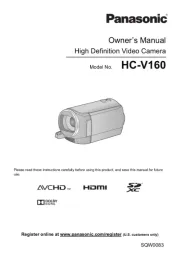
10 April 2025
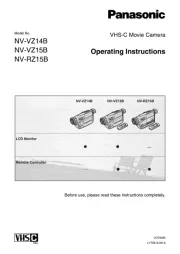
4 April 2025
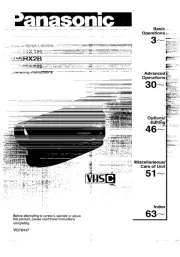
4 April 2025
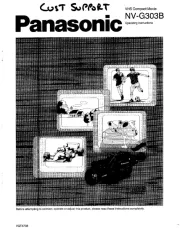
4 April 2025
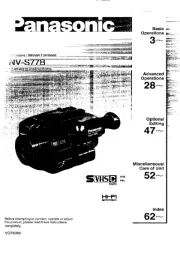
4 April 2025
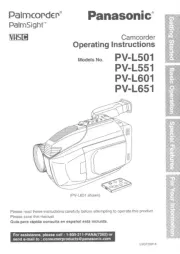
2 April 2025

27 Maart 2025

27 Maart 2025
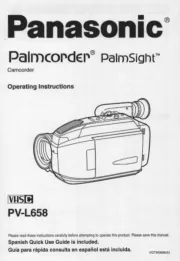
25 Februari 2025
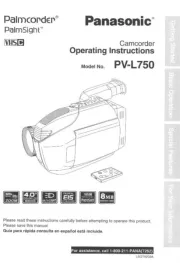
25 Februari 2025
Handleiding Camcorder
- Bresser
- Sakar
- ATN
- Replay
- Trust
- Ricoh
- Hamlet
- Linksys
- Storex
- Oregon Scientific
- Akaso
- Insignia
- Xiaomi
- TacTic
- Genius
Nieuwste handleidingen voor Camcorder

15 September 2025
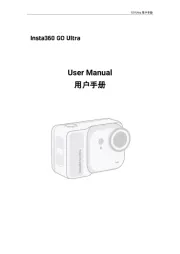
8 September 2025
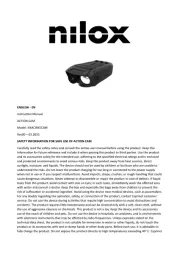
1 September 2025
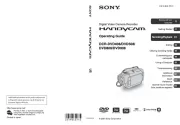
6 Augustus 2025

9 Juli 2025
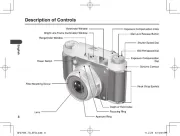
9 Juli 2025
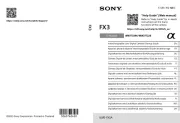
6 Juli 2025
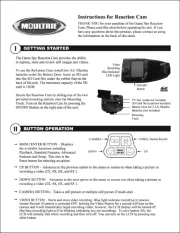
5 Juli 2025

5 Juli 2025
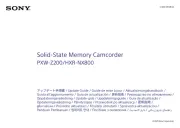
4 Juli 2025